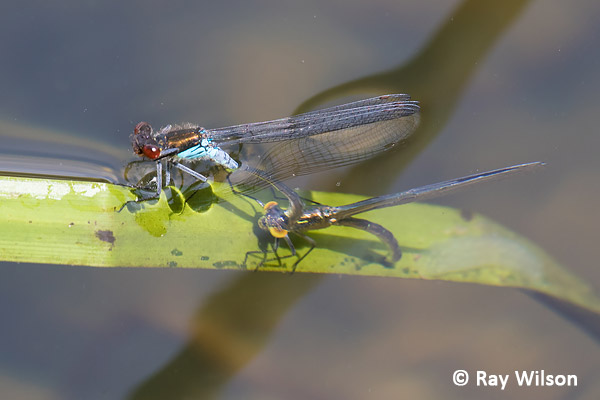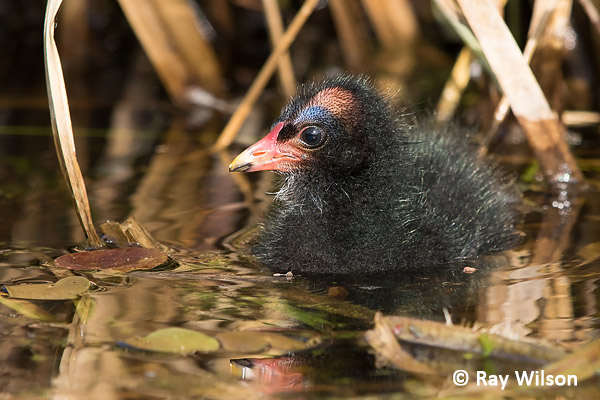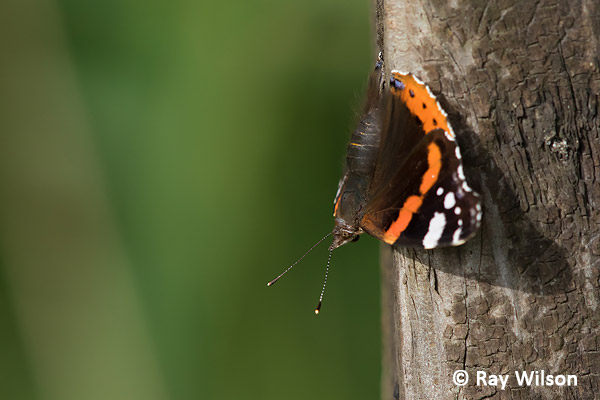
- Home
- Photography Tours
- Diary / Blog
- Galleries
- Foreign Trips
- Tasmania 2016
- NE Queensland 2016
- Western Alps 2016
- NE Spain 2016
- Australia's Wet Tropics 2015
- Australia's Top End 2015
- SW Australia 2015
- Switzerland 2015
- Andalucia 2015
- Belize 2015
- Australia 2014
- Switzerland 2014
- Belize 2014
- Bahama Islands 2014
- Switzerland 2013
- Ecuador 2012-2013
- Florida 2011-2012
- Vancouver Island 2011
- Australia 2010
- Peru 2008
- Bulgaria 2007
- Lesvos 2006
- California 2006
- New Zealand 2005
- Extremadura 2005
- Goa, India 2004
- The Gambia 2003
- About
June 2017
Part 1
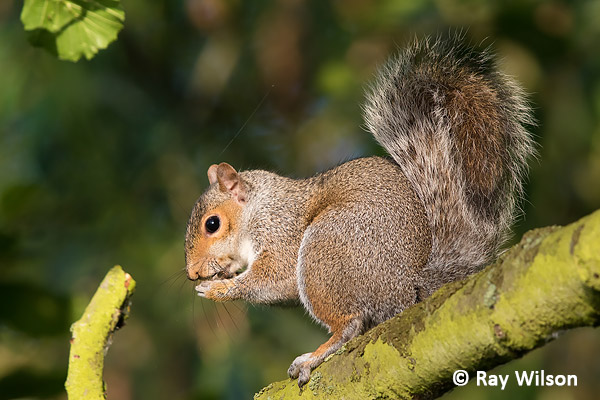
Eastern Grey Squirrel (Sciurus carolinensis)
I spent the first week of June just wandering around the reserve at Attenborough. It was fairly quiet most mornings but Kingfisher activity was much higher than normal. Prior to this week I had only caught brief flashes of blue as a Kingfisher flew past on 4 occasions this year (out of about 75 visits), but two days in a row I saw 5 individuals and the male below even briefly perched above the path for me. Not the greatest of photos, but given how infrequently I see them at Attenborough I was just happy to see it.
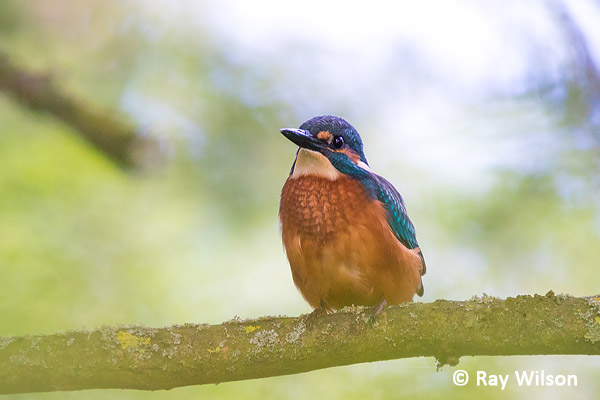
male Common Kingfisher (Alcedo atthis)
The Blue Tits have fledged their first brood and quite large groups of juveniles could often be seen foraging for insects on the willows bordering the northern ponds.
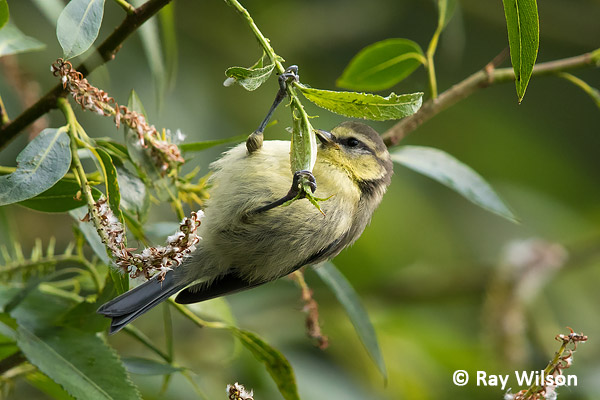
juvenile Blue Tit (Cyanistes caeruleus)
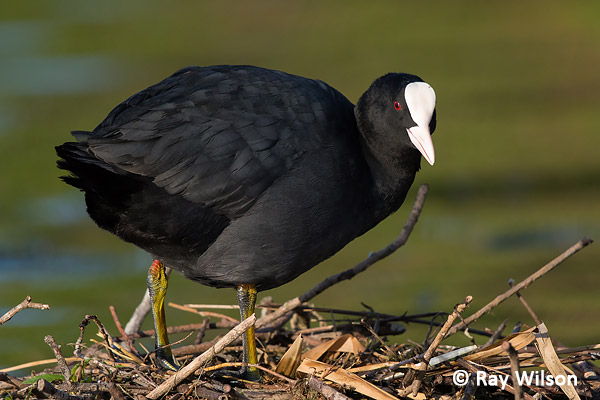
Eurasian Coot (Fulica atra)
In contrast, the Coots and Great Crested Grebes were still at the nest-building stage...
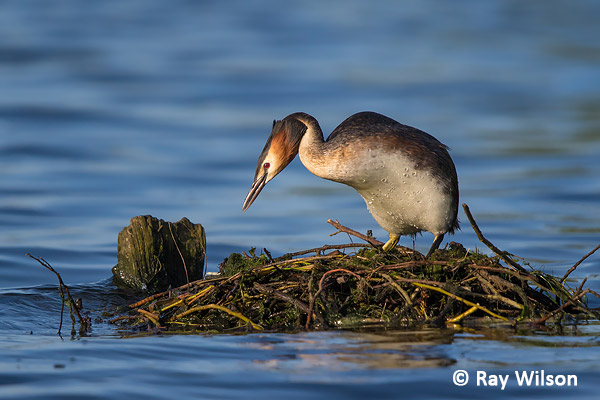
Great Crested Grebe (Podiceps cristatus)
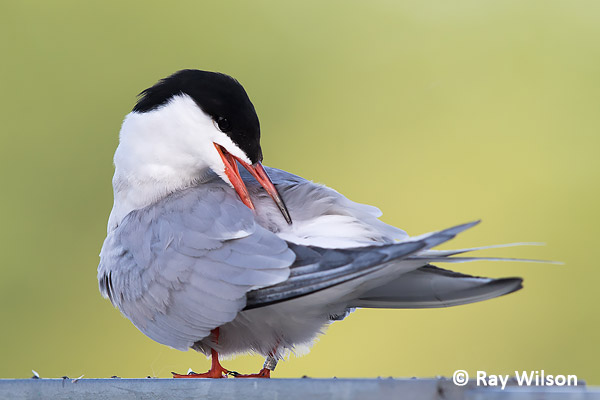
Common Tern (Sterna hirundo)
Several pairs of Common Terns nest on the reserve and adults often perch on the railings of the bridge across to the visitor's centre in the very early morning before there are any people around to disturb them.
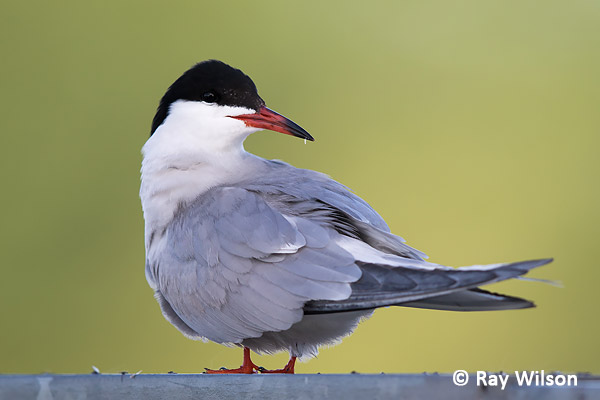
Common Tern (Sterna hirundo)
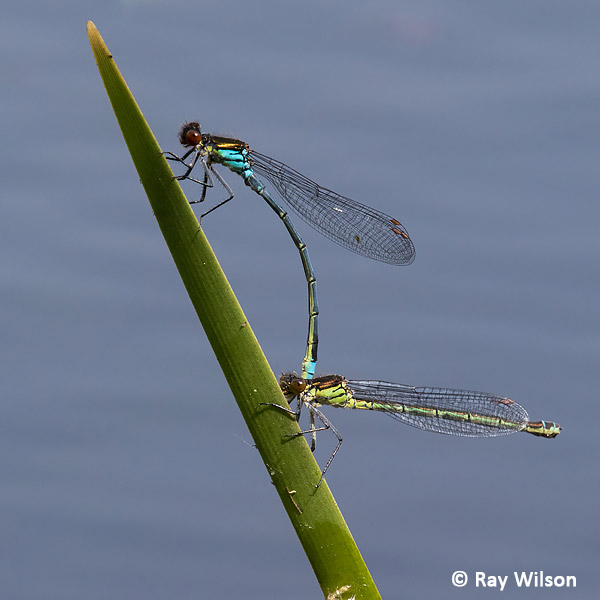
pair of Red-eyed Damselflies (Erythromma najas) in tandem
Out on the water, resting on emergent vegetation, Red-eyed Damselflies are a common sight at Attenborough throughout June. The pair below were walking backwards down a Yellow Iris leaf with the female sytematically laying eggs as the pair got deeper and deeper underwater. They reached a depth of about 30cm before walking back up the stem to the surface and repeating the process on an adjacent leaf.
Red-eyed Damselflies (Erythromma najas) laying eggs underwater on emergent vegetation
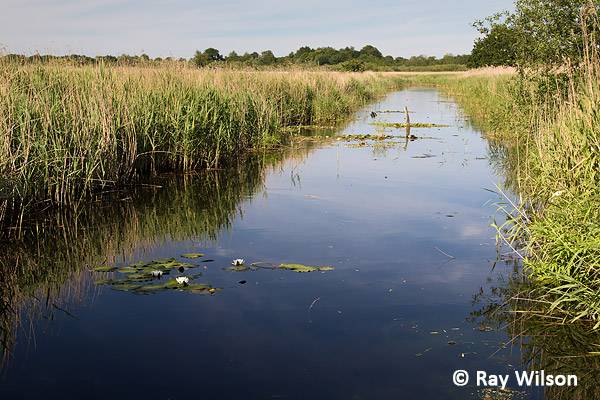
Strumpshaw Fen, Norfolk
In the middle of the month I spent a couple of days in the Norfolk Broads looking for a couple of range-restricted dragonflies, neither of which I had ever seen before.
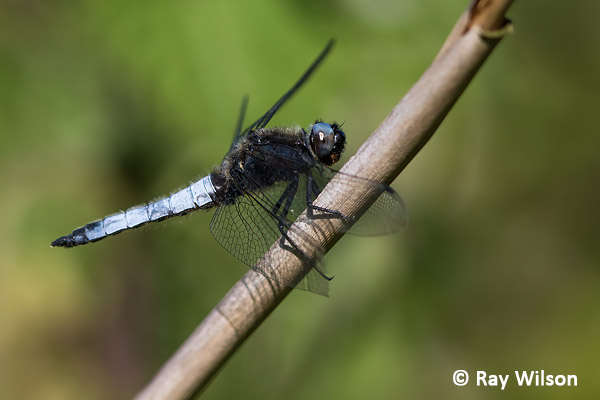
male Scarce Chaser (Libellula fulva)
The first of these was the Scarce Chaser. As its name suggests this is a scarce species in Britain, and is found only in 6 separate populations in the southern England. The Norfolk Broads is one of these areas and it is reasonably common at places such as Strumpshaw Fen.
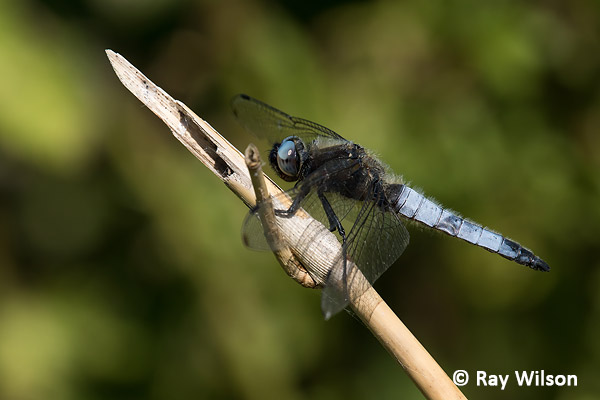
male Scarce Chaser (Libellula fulva)
Males can only really be confused with Black-tailed Skimmers since none of the other blue chasers have a black tip to their abdomen. The dark wing bases and blue eyes, however, readily separate the two.
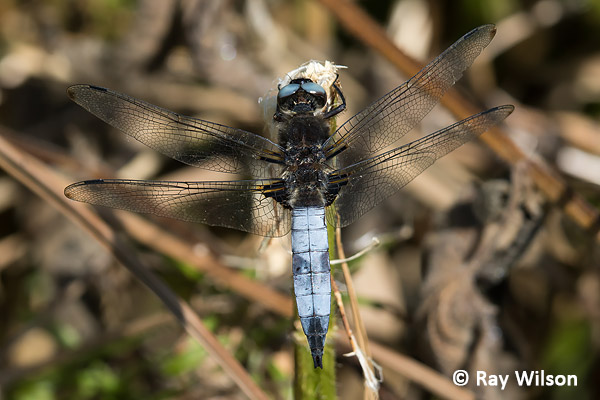
male Scarce Chaser (Libellula fulva)
The dark markings visible on the sides of the abdomen of the individuals shown above are mating scars and can be used as a confirmatory field mark as the position of them is peculiar to Scarce Chaser.
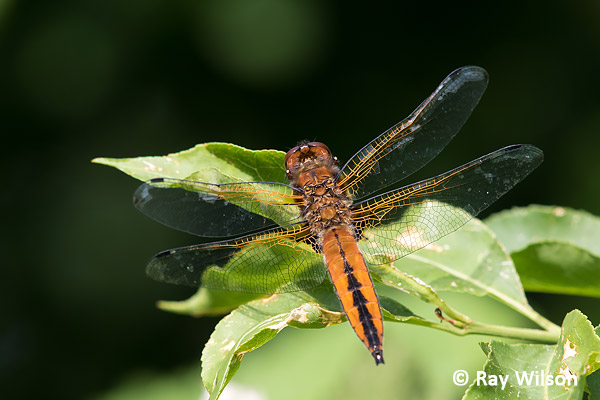
immature male Scarce Chaser (Libellula fulva)
Female and Immature male Scarce Chasers are highly distinctive and the combination of orange abdomen with triangular markings down the centre line and dark wing bases make their identification straightforward.
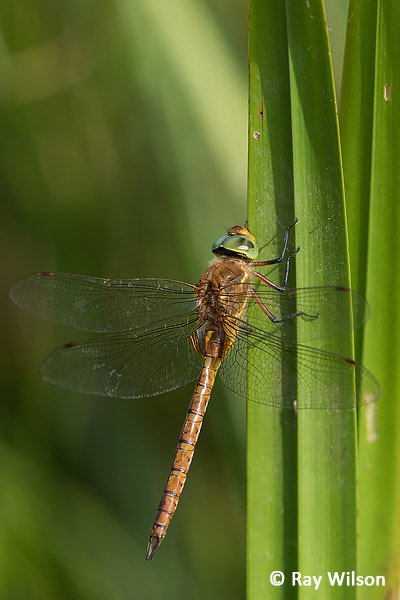
male Norfolk Hawker (Aeschna isoceles)
The other dragonfly I was hoping to catch up with was the Norfolk Hawker. This has an even more restricted distribution in Britain than the Scarce Chaser and is only found in the Norfolk and Suffolk Broads. In Europe it is widespread but is very locally distributed within its range.
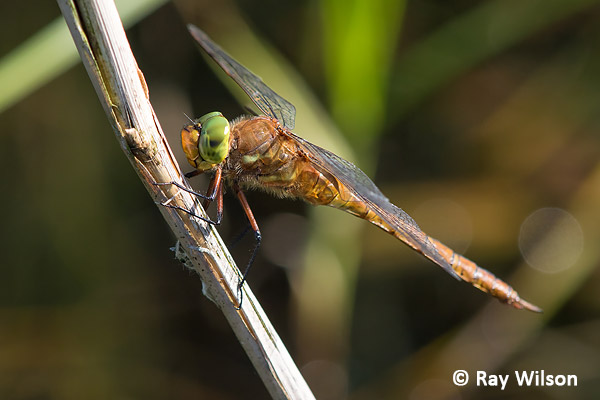
male Norfolk Hawker (Aeschna isoceles)
In Britain, the Norfolk Hawker is unlikely to be mistaken for any other species, as it is the only brown-coloured hawker on the wing in June. Confusion with Brown Hawker (A. grandis) is possible towards the end of the Norfolk Hawker's flight season in July, but the lack of blue markings anywhere on the Norfolk Hawker should make identification easy.
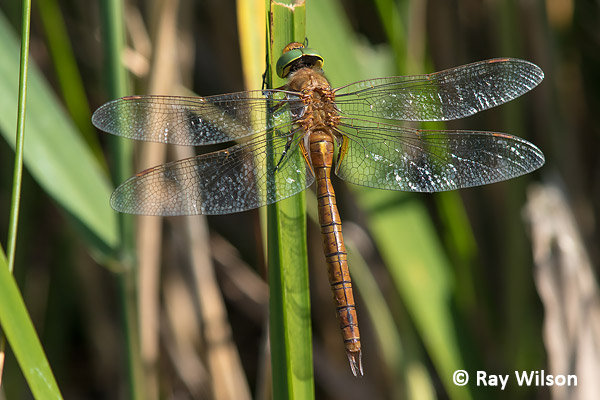
male Norfolk Hawker (Aeschna isoceles)
Norfolk Hawkers are one of the easiest hawkers to photograph in Britain as they frequently perch on emergent vegetation in drainage ditches even when it is hot and sunny, unlike most other hawkers which never seem to sit still for a second.

female Norfolk Hawker (Aeschna isoceles) laying eggs underwater on emergent vegetation
This female was particularly cooperative and she spent about an hour in the late afternoon laying eggs on emergent vegetation below the water's surface.
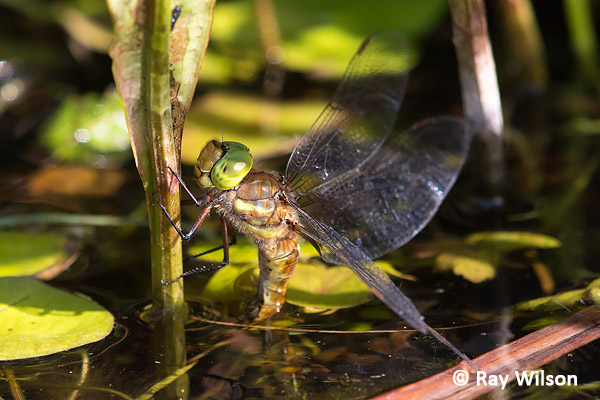
female Norfolk Hawker (Aeschna isoceles) laying eggs underwater on emergent vegetation
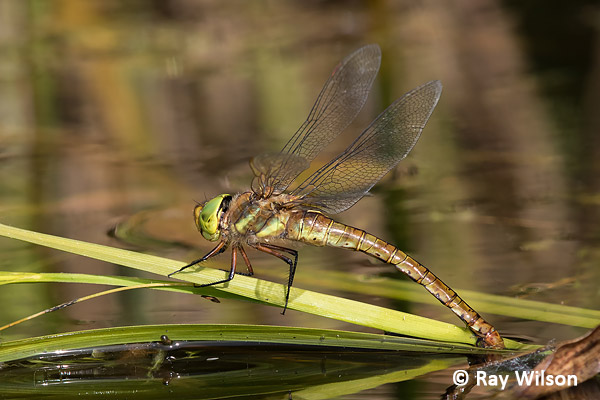
female Norfolk Hawker (Aeschna isoceles) laying eggs on emergent vegetation
Four-spotted Chasers were also common at Strumpshaw Fen, while other species seen (but not photographed) included Hairy Dragonfly, Broad-bodied Chaser, Emperor Dragonfly and Southern Hawker.
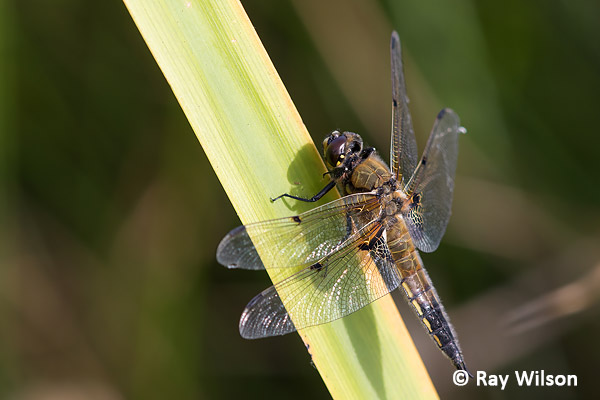
Four-spotted Chaser (Libellula quadrimaculata)
This Viviparous Lizard looked like it was heavily pregnant and was sunning itself on a boardwalk in the early morning.
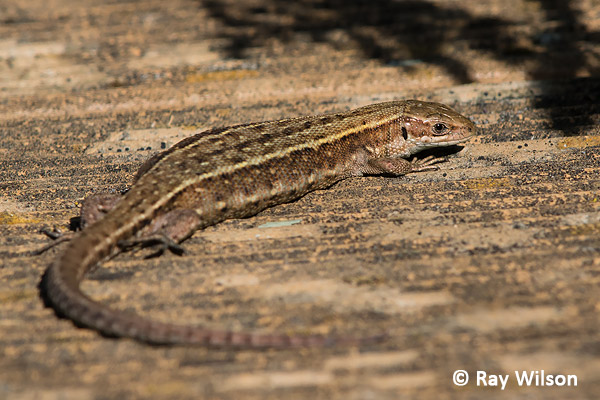
heavily pregnant Viviparous Lizard (Zootoca vivipara)
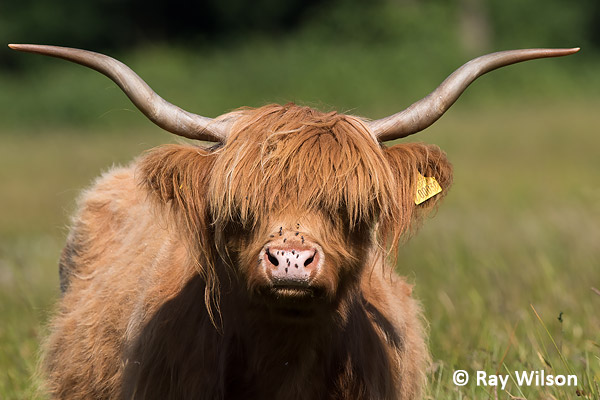
Highland Cow (Bos taurus)
The wet meadow grassland habitat on the reserve at Strumpshaw Fen is carefully maintained by the use of a small herd of Highland Cattle.
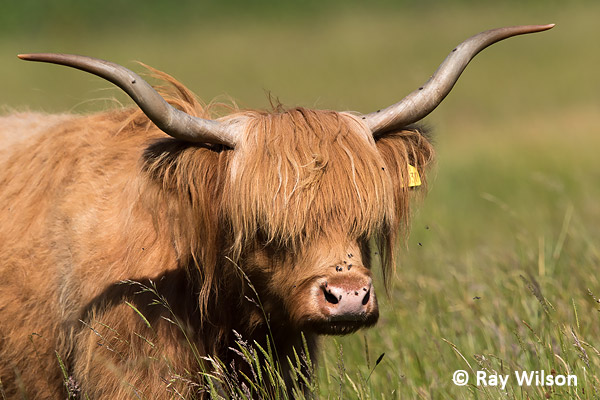
Highland Cow (Bos taurus)
Early summer orchids on the reserve included Common Bee Orchid and Early Marsh Orchid.
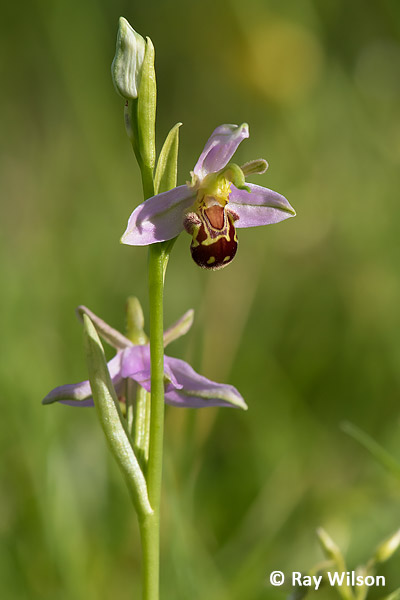
Common Bee Orchid (Ophrys apifera) |
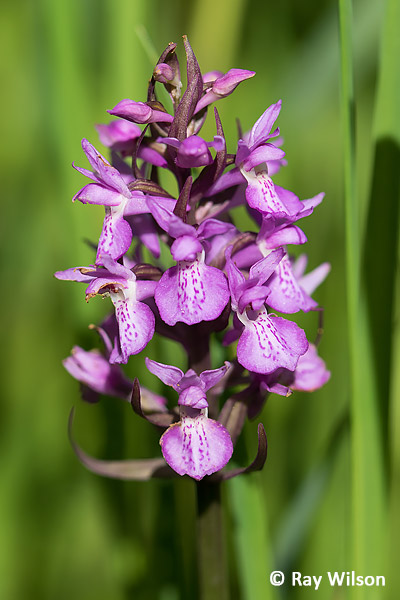
Early Marsh Orchid (Dactylorhiza incarnata) |
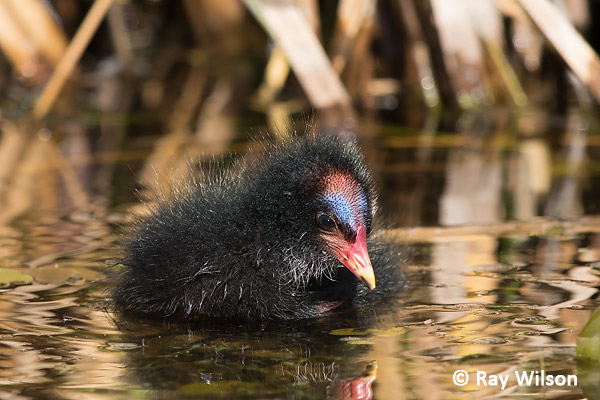
Common Moorhen (Galinula chloropus) chick
A confiding Moorhen family provided a short distraction from the dragonfly photography...
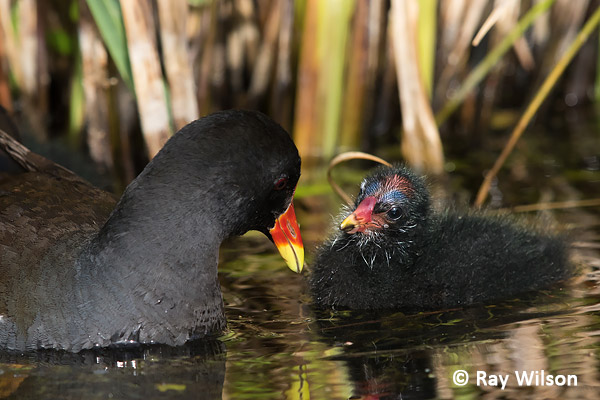
adult Common Moorhen (Galinula chloropus) feeding its chick
Common Moorhen (Galinula chloropus) chick
Red Admiral (Vanessa atalanta)
Ray Wilson owns the copyright of all images on this site.
They may not be used or copied in any form without prior written permission.
raywilsonphotography@googlemail.com
